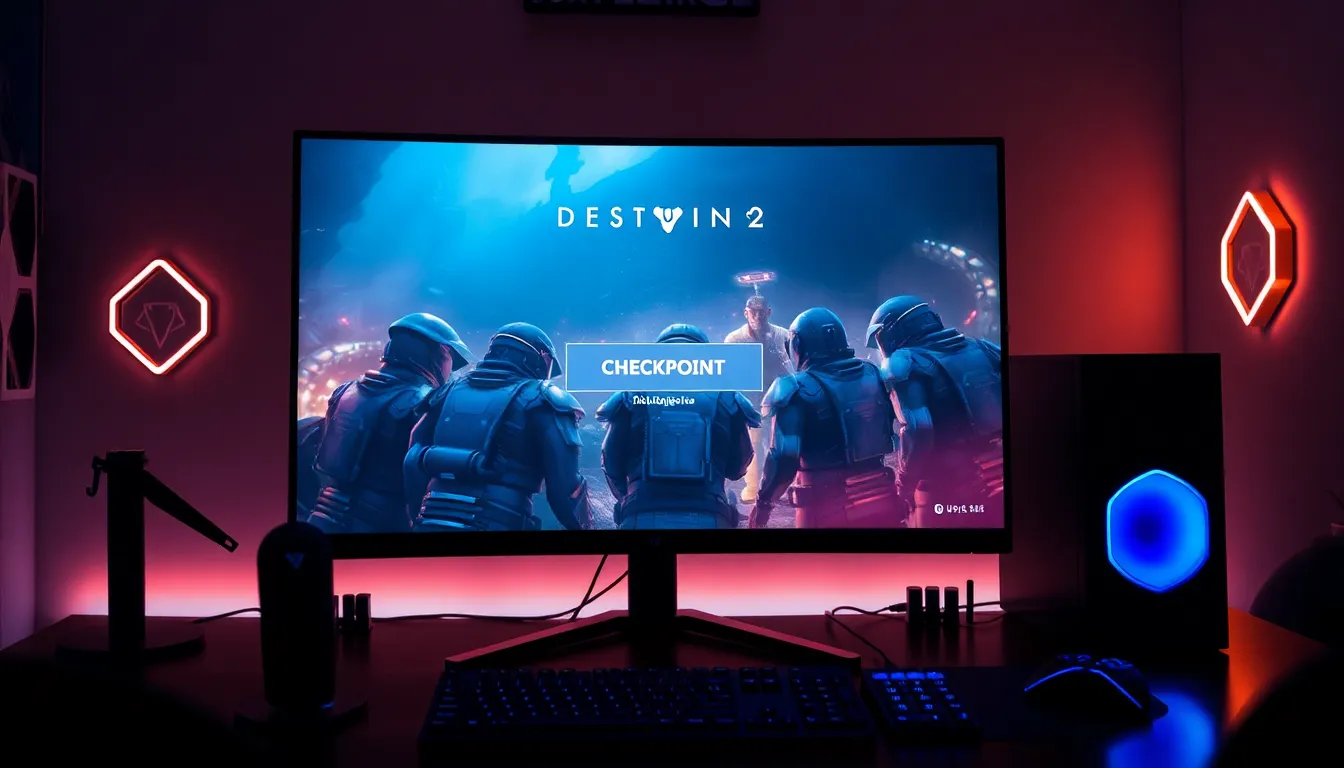Ever found yourself staring at a loading screen in Destiny 2, wishing you could just jump back into the action instead of trudging all the way back to the beginning? Well, welcome to the magical world of checkpoints. In this guide, we’ll dissect the intricacies of Destiny 2 checkpoints, explaining what they are, how they work, and offering invaluable tips to make the most of them. Buckle up, because in the universe of Guardians, knowing your way around checkpoints can be the difference between triumph and despair.
Table of Contents
ToggleWhat Are Checkpoints in Destiny 2?

In Destiny 2, checkpoints serve as vital save points during various gameplay activities. These points allow players to resume their adventures without starting from square one every time they enter a raid, strike, or dungeon. Simply put, they’re like a safety net for Guardians, preventing hours of hard-earned progress from evaporating into thin air.
When entering specific encounters, a checkpoint is automatically generated. For instance, if you’ve battled through waves of enemies and reach a challenging boss, that’s your cue: the checkpoint is in place. If things go awry, and you meet an untimely demise, rejoice. You’ll respawn at that checkpoint rather than trekking back to the start, giving you another shot at glory without the grind.
Types of Checkpoints
Destiny 2 boasts several types of checkpoints, each serving unique functions across various game modes, let’s break them down:
How Checkpoints Function
Checkpoints primarily operate under rules set by each activity. For instance, raids typically have checkpoints at the beginning of each encounter, whereas strikes often grant a checkpoint at important milestones. This way, players can efficiently retry challenging sections without repeating all previous activities.
Checkpoint Mechanics for Raids and Strikes
In raids, checkpoints become crucial, especially during lengthy encounters. Once a team clears a segment of a raid, they’ll gain a checkpoint, this allows them to resume from that saved position in the future. Strikes, while generally shorter, use a similar mechanic. They save progress at key points, allowing players to jump back in if they get wiped too soon.
But, not all activities have checkpoints. For instance, the Last Wish raid has a unique encounter system requiring players to save and manage their checkpoints manually. Understanding these nuances can make a significant difference in gameplay.
Managing Your Checkpoints
While checkpoints can offer a respite from the grind, effectively managing them is equally important. Here’s how:
How to Access and Use Checkpoints
To find a checkpoint, players simply approach the designated point, this can vary slightly depending on the activity, but generally, players will notice the system activating when nearing an important segment. Ensure everyone in your fireteam is on board, as checkpoints are often shared among team members. Coordination here can mean the difference between chaos and a smooth transition.
Best Practices for Checkpoint Management
Every Guardian should have a game plan for managing checkpoints. For starters, always communicate with your fireteam. Let everyone know whether you’ve reached a checkpoint and where the backup point is located. Also, use checkpoints wisely: avoid over-relying on them, but don’t hesitate to take advantage when facing Eldritch horrors or raid bosses. Pacing your playstyle can save you a lot of headaches down the road.
Common Issues and Troubleshooting
As with any game mechanic, loopholes and issues can crop up with checkpoints. Here are some common troubles players face:
- Checkpoint Not Saving: Sometimes, players find their checkpoints mysteriously vanishing. This could be due to server issues or exiting the activity prematurely. To resolve this, double-check your team’s status and ensure everyone has successfully cleared the previous area.
- Joining Late: If a fireteam member joins a game in progress, they may not have access to the existing checkpoints. This can be problematic, especially in raids where moments matter. To combat this, make sure everyone is present before moving forward with major encounters.
- Checkpoints Not Activating: If players notice that checkpoints aren’t activating during crucial moments, it might be related to specific game limits or encountering undesirable conditions. Always maintain communication and check for game updates or potential bugs, Destiny 2 can have moments of unpredictability.
Tips for Maximizing Checkpoint Efficiency
To truly optimize how you use checkpoints, keep the following tips in mind:
- Plan Ahead: Before jumping into challenging missions, consider the team composition and the expected difficulties. Identifying which encounters might cause wipe-outs can aid in better checkpoint management.
- Use Fireteam Synergy: Working together with your teammates can boost efficiency. Ensure everyone knows the importance of a checkpoint before engaging in tough skirmishes.
- Keep Track of Checkpoint Locations: Make a mental map of where checkpoints are in each raid or strike. This allows players to make the most of their opportunities during intense missions.
- Take Breaks Between Checkpoints: If performing encounters back-to-back, ensure players take short breaks to avoid fatigue, keeping the mind fresh contributes to overall performance.





